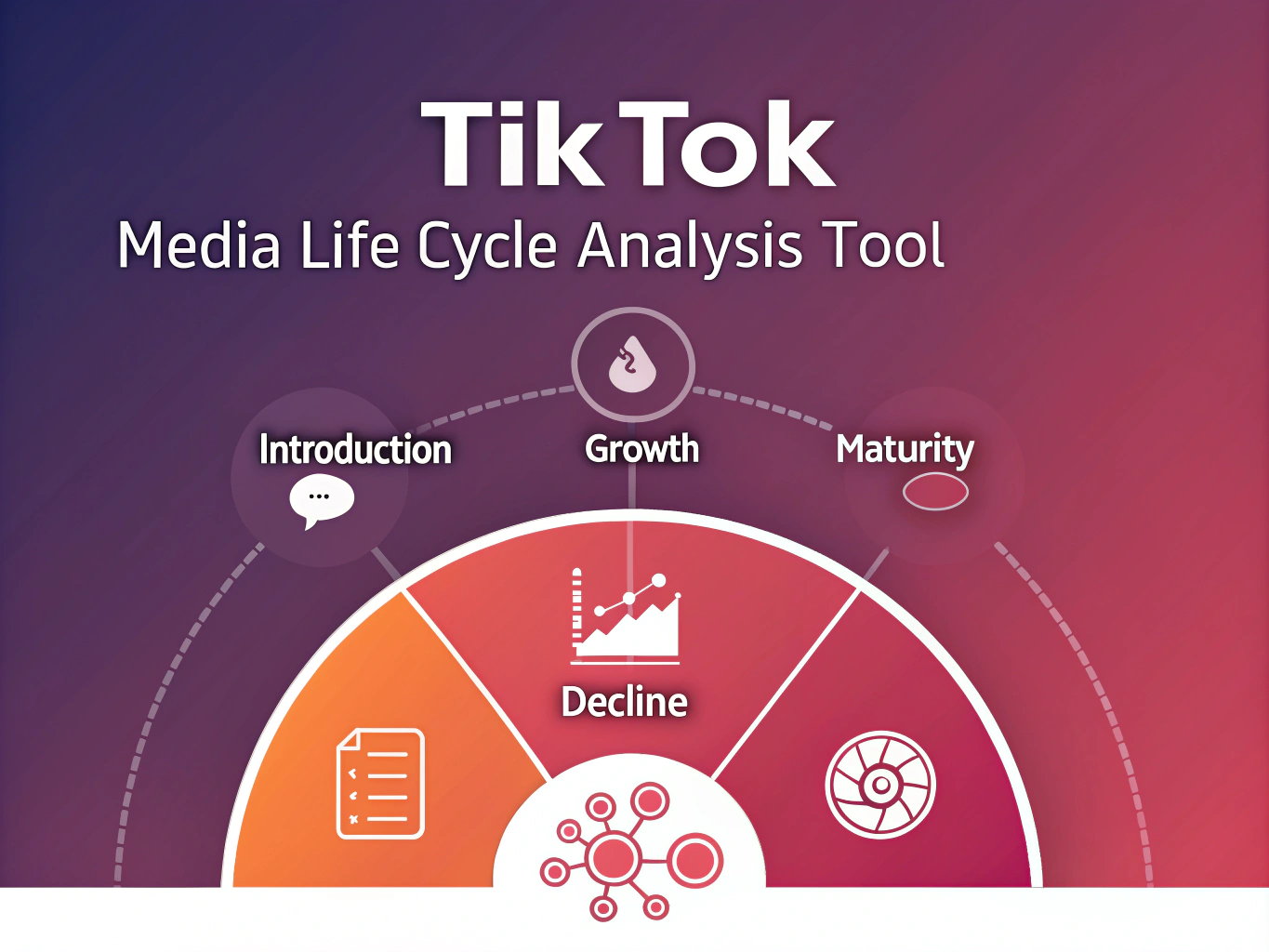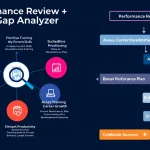Is this tool helpful?
How to Use the TikTok Media Life Cycle Analysis Tool Effectively
To make the most of our TikTok Media Life Cycle Analysis Tool, follow these simple steps:
- Open the tool: Locate the analysis tool on the webpage, which features a clean, user-friendly interface.
- Consider additional aspects (optional): In the provided text area, enter any specific factors you’d like the analysis to consider. This could include recent developments, market trends, or competitor activities that might impact TikTok’s position in the media life cycle.
- Examples of additional aspects:
- TikTok’s recent expansion into e-commerce with TikTok Shop
- The platform’s increasing focus on longer-form content
- Submit your request: Click the “Analyze TikTok’s Media Life Cycle Position” button to generate a comprehensive analysis.
- Review the results: Once processed, the analysis will appear in the “Analysis Results” section below the form.
- Copy the results (optional): Use the “Copy to Clipboard” button to easily save or share the analysis.
Understanding the TikTok Media Life Cycle Analysis Tool
The TikTok Media Life Cycle Analysis Tool is a sophisticated instrument designed to provide in-depth insights into TikTok’s current position within the media life cycle. By leveraging advanced algorithms and up-to-date market data, this tool offers a comprehensive evaluation of TikTok’s developmental stage, market presence, and future trajectory in the dynamic social media landscape.
Purpose and Benefits
The primary purpose of this tool is to offer users a clear, data-driven understanding of TikTok’s current status in the media life cycle. This information is invaluable for:
- Marketing professionals developing strategies for TikTok campaigns
- Investors assessing TikTok’s potential for growth and market dominance
- Researchers studying social media trends and platform evolution
- Business owners considering TikTok as a marketing channel
- Social media managers planning long-term content strategies
By providing a detailed analysis of TikTok’s position, the tool enables users to make informed decisions about their engagement with the platform, whether for marketing, investment, or research purposes.
Benefits of Using the TikTok Media Life Cycle Analysis Tool
1. Data-Driven Decision Making
One of the primary benefits of this tool is its ability to facilitate data-driven decision making. By providing a comprehensive analysis of TikTok’s current position in the media life cycle, users can base their strategies and decisions on solid, analytical foundations rather than speculation or anecdotal evidence.
2. Competitive Advantage
Understanding TikTok’s position in the media life cycle gives users a competitive advantage. This knowledge allows businesses and marketers to anticipate trends, adapt strategies, and capitalize on opportunities before their competitors.
3. Risk Mitigation
For investors and businesses heavily invested in TikTok, this tool provides valuable insights that can help mitigate risks. By understanding the platform’s current stage and potential future trajectories, users can make more informed decisions about their level of investment or engagement with the platform.
4. Strategic Planning
The tool’s analysis is invaluable for strategic planning. Whether you’re a marketer planning a long-term TikTok strategy or a business owner considering entering the platform, understanding TikTok’s life cycle position can help you align your plans with the platform’s projected growth and development.
5. Trend Forecasting
By analyzing TikTok’s current position and potential future trajectories, the tool aids in trend forecasting. This can be particularly useful for content creators, marketers, and businesses looking to stay ahead of the curve in their TikTok strategies.
Addressing User Needs and Solving Specific Problems
The TikTok Media Life Cycle Analysis Tool addresses several key user needs and solves specific problems related to understanding and leveraging TikTok’s position in the social media landscape:
1. Clarifying TikTok’s Market Position
Many users struggle to accurately assess TikTok’s current market position due to its rapid growth and evolving features. This tool provides a clear, data-driven analysis of TikTok’s stage in the media life cycle, helping users understand where the platform stands in relation to its competitors and its own developmental trajectory.
2. Informing Investment Decisions
For investors considering putting resources into TikTok or companies leveraging the platform, understanding its life cycle stage is crucial. The tool’s analysis can help inform these decisions by providing insights into TikTok’s potential for further growth or challenges it may face.
3. Guiding Marketing Strategies
Marketers often struggle to determine how much emphasis to place on TikTok in their overall social media strategy. By analyzing TikTok’s current stage and potential future developments, the tool helps marketers make more informed decisions about resource allocation and long-term strategy planning.
4. Predicting Future Trends
The tool’s analysis of TikTok’s current stage and potential future trajectories helps users anticipate upcoming trends on the platform. This is particularly valuable for content creators and businesses looking to stay ahead of the curve in their TikTok strategies.
5. Comparative Analysis
By providing insights into how TikTok’s current stage compares to other major social media platforms, the tool helps users understand TikTok’s unique position in the market. This comparative perspective is crucial for developing effective cross-platform strategies.
Practical Applications and Use Cases
The TikTok Media Life Cycle Analysis Tool has a wide range of practical applications across various industries and professional roles. Here are some examples of how different users might leverage the tool:
1. Digital Marketing Agencies
A digital marketing agency could use the tool to inform their client recommendations. For instance, if the analysis shows that TikTok is in a growth stage with high user engagement, the agency might recommend increasing ad spend on the platform. Conversely, if the analysis indicates signs of maturation, they might suggest diversifying their client’s social media strategy.
2. E-commerce Businesses
An e-commerce business considering launching a TikTok Shop could use the tool to assess the potential of this new feature. If the analysis suggests that TikTok is entering a mature stage with slowing user growth, the business might decide to approach TikTok Shop cautiously, perhaps with a limited product range to test the waters.
3. Venture Capital Firms
A venture capital firm evaluating investment opportunities in the social media space could use the tool to assess TikTok’s potential for continued growth. If the analysis indicates that TikTok is still in a rapid growth phase with untapped markets, this might influence the firm’s decision to invest in TikTok-related startups or technologies.
4. Content Creators
A professional content creator could use the tool to inform their platform strategy. If the analysis suggests that TikTok is entering a saturation phase, the creator might decide to diversify their content across multiple platforms rather than focusing exclusively on TikTok.
5. Academic Researchers
Researchers studying social media trends could use the tool as part of their analysis of platform evolution. The insights provided could inform studies on user behavior, platform competition, or the impact of social media on society.
6. Tech Journalists
A tech journalist writing about the social media landscape could use the tool to provide data-backed insights in their articles. For example, they might use the analysis to support arguments about TikTok’s future prospects or its impact on established platforms.
Frequently Asked Questions (FAQ)
1. What is the media life cycle?
The media life cycle is a concept that describes the stages a media platform or technology goes through from its introduction to its eventual decline. Typically, these stages include introduction, growth, maturity, and decline, although some models include additional stages like saturation or revival.
2. How often is the data in the tool updated?
The tool leverages the most recent publicly available data and market analyses. While we strive to keep our data as current as possible, the rapidly changing nature of the social media landscape means that some information may be subject to change.
3. Can this tool predict TikTok’s future with certainty?
While our tool provides data-driven insights and projections, it’s important to note that the future of any platform can’t be predicted with absolute certainty. The tool’s analysis should be used as one of many factors in decision-making processes.
4. How does this tool compare TikTok to other social media platforms?
The tool considers TikTok’s user growth, engagement metrics, feature development, and market presence in relation to other major social media platforms. This comparative analysis helps contextualize TikTok’s position within the broader social media ecosystem.
5. Can I use this tool to analyze other social media platforms?
Currently, this tool is specifically designed to analyze TikTok’s position in the media life cycle. However, the insights provided often include comparative data that can offer some understanding of other platforms’ positions as well.
6. How can I integrate the insights from this tool into my marketing strategy?
The insights provided by this tool can inform various aspects of your marketing strategy, including resource allocation, content creation, ad spending, and long-term planning. Consider the analysis in conjunction with your specific business goals and target audience to develop a comprehensive TikTok strategy.
7. Does the tool take into account regional differences in TikTok’s popularity?
Yes, the tool’s analysis considers global trends as well as significant regional variations in TikTok’s adoption and usage. However, for more specific regional insights, you may want to supplement this analysis with localized data.
8. How does the tool account for new features or changes in TikTok’s platform?
The tool’s analysis incorporates recent developments and feature launches on TikTok. You can also input specific recent changes or features you’d like considered in the “Additional aspects or factors” field when using the tool.
9. Can this tool help me decide whether to invest in TikTok advertising?
While the tool doesn’t provide direct investment advice, its insights into TikTok’s current stage and potential future trajectories can certainly inform your decision-making process regarding TikTok advertising investments.
10. How does the tool handle conflicting data or trends?
In cases where there are conflicting data or trends, the tool’s analysis aims to present a balanced view, considering multiple perspectives and potential outcomes. This approach provides users with a comprehensive understanding of TikTok’s complex position in the media landscape.
Important Disclaimer
The calculations, results, and content provided by our tools are not guaranteed to be accurate, complete, or reliable. Users are responsible for verifying and interpreting the results. Our content and tools may contain errors, biases, or inconsistencies. We reserve the right to save inputs and outputs from our tools for the purposes of error debugging, bias identification, and performance improvement. External companies providing AI models used in our tools may also save and process data in accordance with their own policies. By using our tools, you consent to this data collection and processing. We reserve the right to limit the usage of our tools based on current usability factors. By using our tools, you acknowledge that you have read, understood, and agreed to this disclaimer. You accept the inherent risks and limitations associated with the use of our tools and services.







